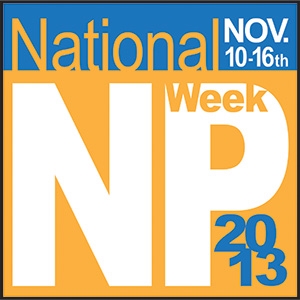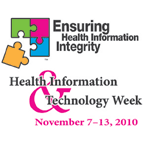National Radiologic Technology Week on November, 2024: What is the average school requirements and average salary for x ray techs?
National Radiologic Technology Week 2024. National Radiology Week T-shirts, Sweatshirts, Mugs & More! Gifts In Every Topic Imaginable.
As an Amazon Associate I earn from qualifying purchases.

School is usually 40 hours per week for 2 years. After you graduate from an accredited school, you take a national exam to become registered.
You can find information about radiologic technology here:
Salary varies a lot depending on the area of the country. The most recent salary survey by the ASRT is here:
You can find accredited schools here: (choose Radiography and your state, then search)

I want to go to 4 yr radiology school but i don't know the difference between the 2 yr and 4 yr. please help
A radiologic technologist in the U.S. is educated in a two year accredited (by the Joint Review Committee on educational programs in Radiologic Technology) program. There are accredited military program (such as the US ARMY MOS 68P), 2-year certificate programs, 2-year associate degree programs and there are 4 year bachelors programs in Radiologic Technology. There are a few Masters Degree programs offered in the USA in Education and Administration. After completion of any of these programs, the graduate technologist would sit for their board exam. The American Registry of Radiologic Technologists certification (or board) exam is the gold standard in the USA. However, some states allows for the practice called "limited license" radiography, in which case individuals are permitted to attend classes for several weeks with a focus on a specific body part, sometimes followed by the ARRTexam, but this may be optional as long as the state they practice in has issued them a "limited license" to practice.
Federal legislation protects the public from the hazards of unnecessary exposure to medical and dental radiation by ensuring that operators of radiologic equipment are properly educated. However, there is much controversy of what "properly educated" is defined as. The gold standard in the USA is a minimum of 2 years with a full accredited curriculum (Refer to ASRT curriculum guide & JRCERT accreditation standards). Furthermore, under this legislation, the federal government sets voluntary standards that states may use for accrediting training programs and certifying individuals who engage in medical or dental radiography.
In 2005, 38 states certified radiologic technologists. Certification, which is voluntary, is offered by the American Registry of Radiologic Technologists. Many employers prefer to hire certified radiographers. Certified radiographers have the most career flexibility to practice, as the ARRT credentials are accepted everywhere in the USA (although some states do require a state license to practice too). Those not credentialed by the ARRT and only licensed in their state may not be able to practice outside that state.
Radiographers certified by the ARRT are expected to re-certify every two years. To be recertified, radiographers must complete 24 hours of continuing education every two years. Failure to complete this continuing education can result in a radiologic technologist needing to re-take their ARRT board exam in order to be credentialed again.
Radiologic Technology (B.S. Program)
The Bachelor of Science in diagnostic radiologic technology is a four-year degree program consisting of two years of pre-professional courses and two years of professional courses. The program complies with the professional curriculum of the American Society of Radiologic Technologists. Upon completion of the program, a student receives a Bachelor of Science Degree in Radiologic Technology and is eligible to take the national certifying examination administered by The American Registry of Radiologic Technologists.
Radiology opposes career restriction and offers me plenty of career options. With a two year Associate’s Degree, I can become a radiology technician. With additional education and certification, I can go further to work as a radiologist assistant (3). With a four year degree, medical school training, and board certification, I have the options of working in diagnostic radiology which uses a variety of noninvasive radiology techniques like MRI scans, CT scans, x-rays, and ultrasound, to identify various medical conditions (4), or Interventional Radiology which employs minimally invasive procedures to treat vascular and non-vascular diseases by small catheters and catheter based instruments (5). I can even work in the sub-specialties of radiology. Neurology, for example, offers a sub-specialty in neuroradiology for those interested in diseases of the nervous system, and pediatrics offers a sub-specialty for those who want to work with children. I can still be a great help to other specialists if I choose to not sub-specialize. When a cardiologist needs an x-ray of the blood vessels for instance, he can refer patients to me for an angiogram. Being able to assist another specialist in his job would bring me great satisfaction.

What do I need to be a x ray tech?
There are both college-based and hospital-based schools. In general, I have found that you get better training in a hospital and they are less expensive that college, but they may be harder to get into. You will need a 2-year certificate, and it is usually 40 hours per week for the entire 2 years. After that, you take a national registry exam.
To find schools, go to ARRT.org, then Education/CE, Primary Certification, List of Educational Pgms, Radiography, and Submit. Go down the list until you find the schools in your area.
Want to Be an R.T.?
Explore
If you've ever had an x-ray, you've probably met a radiologic technologist. But did you know there actually are four professional practice areas for radiologic technologists? Radiographers use x-ray equipment to produce images of the tissue, organs, bones and vessels of the body. Some radiographers specialize in mammography, computed tomography (CT scans), magnetic resonance imaging (MRI) or other types of imaging. Sonographers use high-frequency sound waves to create images of anatomy. Nuclear medicine technologists use radiopharmaceuticals and special cameras to produce images of organs and reveal their function. And radiation therapists administer highly focused forms of radiation to treat cancer and other diseases. Explore the range of the radiologic sciences, and follow the path that best suits you.
Opportunity
A career in radiologic technology can lead in many directions. Demand for radiologic technologists is strong across the country, in every health care setting. You could work in a large hospital, a suburban outpatient clinic or a rural physician's office. You could specialize in dozens of clinical areas ranging from prenatal care to orthopedics. You could be responsible for quality assurance or for overseeing the implementation of new technology. You could manage an entire radiology department, including its budget and personnel. Or you could teach. The boundaries of your career in radiologic technology are determined only by your own abilities and interests.
Options
Students follow many paths into radiologic technology. Some attend two-year programs based in hospitals, earning a certificate when they graduate. Other students enroll in two-year programs at community colleges or technical schools, earning an associate degree. And others choose to attend four-year programs at universities and colleges, graduating with a bachelor's degree. With nearly 1,000 accredited programs in the United States, there is probably a radiologic technology school near you. No matter which type of program you attend, you won't spend all of your time in the classroom. You'll also work side-by-side in radiology departments with doctors, nurses and experienced radiologic technologists. During this part of your education, known as clinical rotation, you'll have a hands-on opportunity to practice your patient care skills and fine-tune your technical knowledge.
Balance
Whether you consider yourself technically adept or not, you will be comfortable studying radiologic technology. That's because the field is part science, part art. During your educational program, you will study subjects such as anatomy, biology, radiation safety and physics. You'll learn to use computers to acquire and manipulate images. And you'll work with some of the most technologically advanced equipment in the medical field. But you'll also learn to communicate with patients, to solve problems and to work with other members of the health care team. You will develop skills that allow you to provide patient care that is accurate as well as compassionate.
Investigate
What makes a career in radiologic technology worth a closer look? First, as a radiologic technologist, you'll be on the cutting edge of scientific progress, working with the latest advances in medical care. You'll also be a member of one of the fastest-growing professions in the country. Experts predict job openings for qualified radiologic technologists will be plentiful through 2008, and opportunities to advance within the field are expanding as well. But most importantly, you'll be a vital member of the patient care team. Whether producing an x-ray image to detect a broken bone or delivering radiation therapy to destroy a cancerous tumor, radiologic technologists provide the care that leads to diagnosis, treatment and cure. For a career that makes a difference in others' lives while improving your own, investigate radiologic technology.
Resources
For additional information about careers in radiologic technology, contact your school's guidance counselor or career advisor. Or start your own investigation:
For a list of accredited educational programs in nuclear medicine, contact the Joint Review Committee on Educational Programs in Nuclear Medicine Technology, 716 Black Point Road, P.O. Box 1149, Polson, MT 59860-1149, or visit www.jrcnmt.org.
For information about accredited educational programs in sonography, click on www.jrcdms.org, or write to:
Joint Review Committee on Education in Diagnostic Medical Sonography
2025 Woodlane Drive
St. Paul, MN 55125-2998
Phone: 651-731-1582
E-mail: jrc-dms@jcahpo.org
website:
For names and addresses of accredited schools in radiography and radiation therapy, contact the Joint Review Committee on Education in Radiologic Technology, 20 N. Wacker Drive, Suite 900, Chicago, IL 60606-2901, or visit its Web site at www.jrcert.org.
The Web site of the American Registry of Radiologic Technologists also includes a list of accredited programs in radiography, radiation therapy and nuclear medicine. Go to www.arrt.org.
The Web sites of many of the profession's membership associations contain information about careers, scholarships and the radiologic science profession. Visit the American Society of Radiologic Technologists at www.asrt.org, the Society of Nuclear Medicine at www.snm.org, and the Society of Diagnostic Medical Sonography at www.sdms.org.
Outlook
A career in radiologic technology offers a promising future, job stability and good salaries. As technology advances and the American population ages, the demand for radiologic exams and procedures has soared. The country needs a growing number of qualified professionals to provide medical imaging and radiation therapy. Wages of radiologic technologists are competitive with other health professionals who have similar educational backgrounds. A 2001 survey by the American Society of Radiologic Technologists showed that wages averaged about $16 per hour for entry-level radiographers and $20 per hour for entry-level radiation therapists. With experience, additional education or supervisory responsibilities, wages can reach an average of $20 to $25 per hour. In addition, many employers allow radiologic technologists to work flexible schedules, including part-time or evenings, giving you the time you need for family, friends, school or other activities.



















